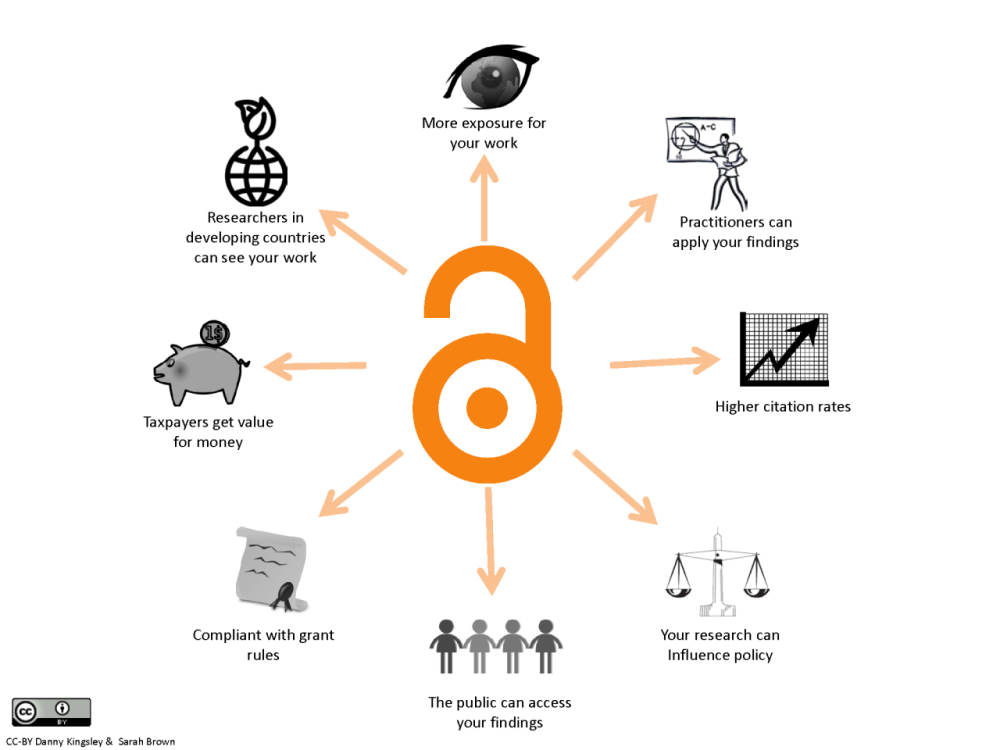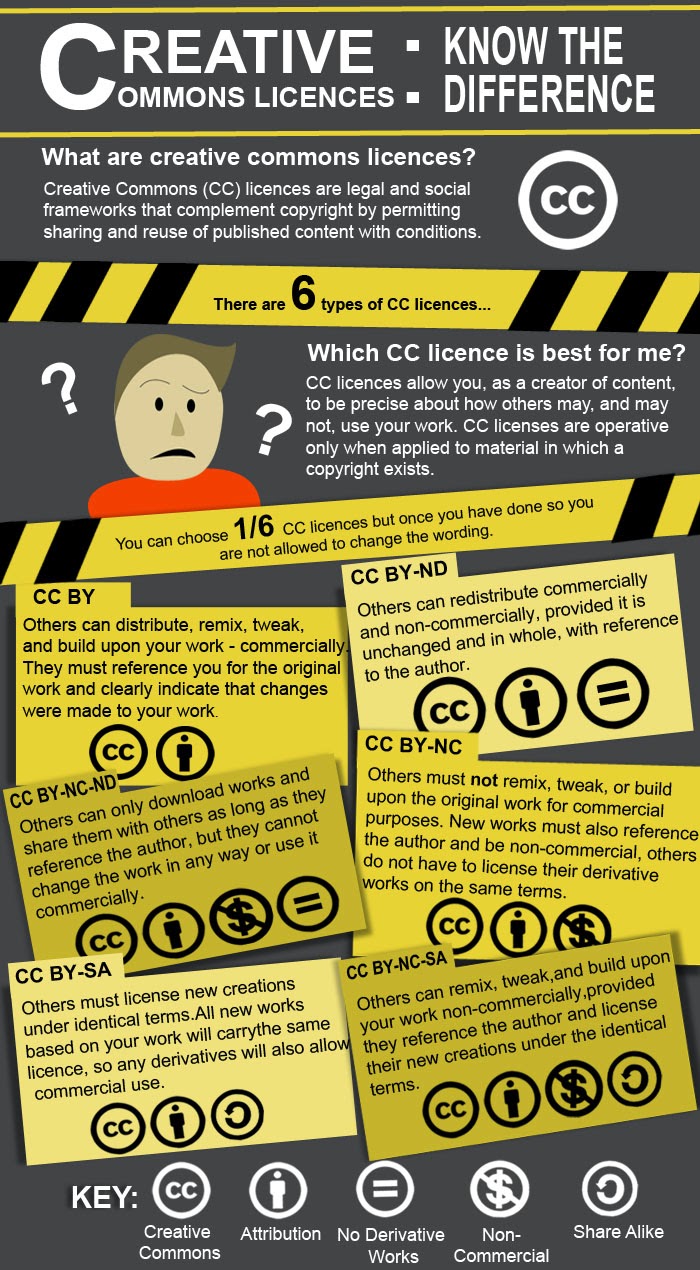Open Access or OA, refers to online research outputs that are free of all restrictions on access and use.

Importance of OA
Simply put, OA allows for the sharing of knowledge as well as accelerating research, which is mainly what the Web was originally intended for. Anyone is granted the autonomy to locate and retrieve the research they require.
Gold or Green OA?
In order to achieve open access, there are two distinctions. Gold and Green open access. (Witold Kieńć)
Gold OA, also known as the ‘pay-to-publish’ OA option. This involves paying an additional cost (APC) to attach an ‘open’ license to your article, typically a Creative Commons license (*Graphic below elaborates more), allowing the version of your record to be circulated freely by anyone who meets the requirements of the license.

Green OA is the alternative to ‘pay-to-publish’, Gold OA. This option makes the final text of a published paper the ‘Accepted Manuscript’, along with any original images, tables, etc., relevant to the subject or institutional repository, typically after an embargo period that follows the article’s publication in a journal or the journal’s site.
After establishing some understanding of what OA is, how exactly will content producers benefit from the free distribution of online materials on the Web? The understandable concern shared by content producers is to secure copyright. After all, why go to the pains of publishing something when it can be accessed by anyone freely?
Content Producer
Content producer refers to an individual who publishes for websites. The range is extensive, covering news and blogs, (Very much like what I am doing) to product descriptions or auditing existing content. These are executed to ensure the corporate content strategy is dutifully implemented.
By advocating OA, the pros presents content producers with, their publications are more likely to be indexed in databases and listed in search engines (Visibility) increasing their exposure, they are also more often cited because of their higher publicity and availability to anyone (Citation & Dissemination).
However, the disadvantages are the copying of the original publication without proper citations (Plagiarism), the inadequate compensation with the lack of support (Sustainability), content producers have to pay to publish, the negative impacts of fund cuts discourages OA (Fees).
Conclusion
OA is very much relatable to me especially with the increased need to access academic information to facilitate my learning. In any context, individuals need to understand the product of intellectual hard work consummated by content producers. Each work holds value in its own right and it should be treated with righteousness and due respect.
(437 Words)
References:
Budapest. 2002. http://www.budapestopenaccessinitiative.org/read (Accessed on 15/11/2016)
Open Access Academy. http://www.oaacademy.org/why-open-access.html (Accessed on 15/11/2016)
Main purpose of the Internet. https://www.reference.com/technology/main-purpose-internet-f26f4c9227f6a8a2 (Accessed on 15/11/2016)
Youtube Video (1) Maciej Chojnowski in conversation with Prof. Stevan Harnad (University of Southampton). (Accessed on 15/11/2016)
Witold Kieńć. 2015. http://openscience.com/green-oa-vs-gold-oa-which-one-to-choose/ (Accessed on 15/11/2016)
Creative Common License. http://libguides.aston.ac.uk/c.php?g=356327&p=2404666 (Accessed on 15/11/2016)
Youtube Video (2) Professor Martin Hall explains the difference Green and Gold Open Access. Recorded for Open Access Week 2014 (Accessed on 15/11/2016)
Anne-Marie Jordan. 2012. https://www.deeson.co.uk/blog/what-content-producer-part-1 (Accessed on 15/11/2016)
The Writing Studio. http://writing.colostate.edu/guides/page.cfm?pageid=803&guideid=37 (Accessed on 15/11/2016)
Hi Nicol
You mentioned in your post about the advantages and disadvantages in regards to the content producers, but in my opinion, it is not just solely about them; open access content also has an impact on the end-users as well.
End-users like us do get benefits from OA content (who complains about receiving free things?) and at the same time, experience the drawbacks of it. An example includes having lower quality content due to, as you brought up, “fees”, where the producers churn or favour more quantity of articles in lesser time to cover the publication costs (Source: http://www.reuters.com/article/us-science-publishing-open-access-idUSBRE85B0SH20120612).
Personally, I feel that whether to support OA or not, the purpose for it must be discussed. As talked about in my post (https://leliawkl.wordpress.com/2016/11/15/topic-5-free-online-content-good-or-bad), it is very subjective – Is the content producer’s purpose to share information or earn money (do they prefer intrinsic or extrinsic rewards)? Do you agree?
Cheers.
LikeLike